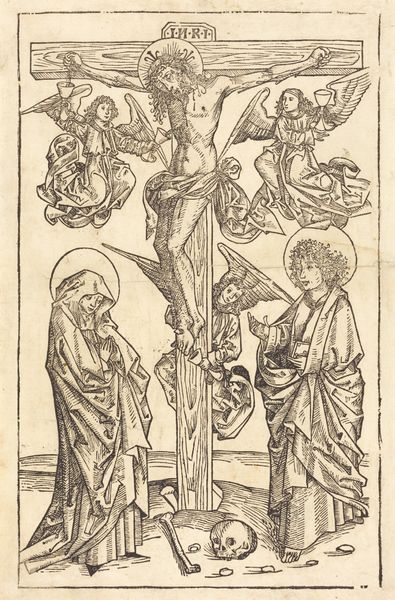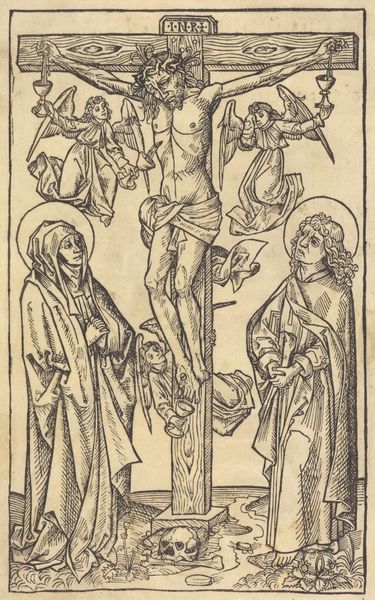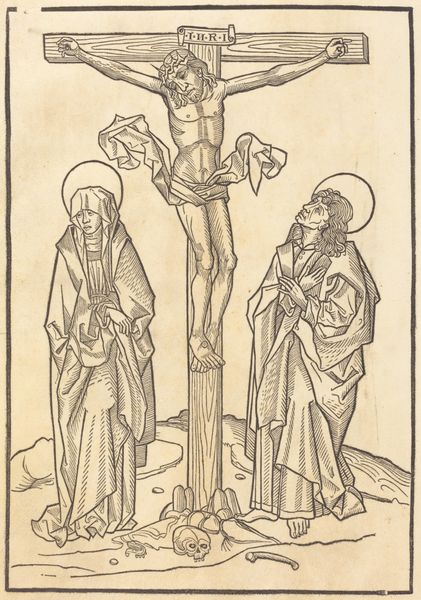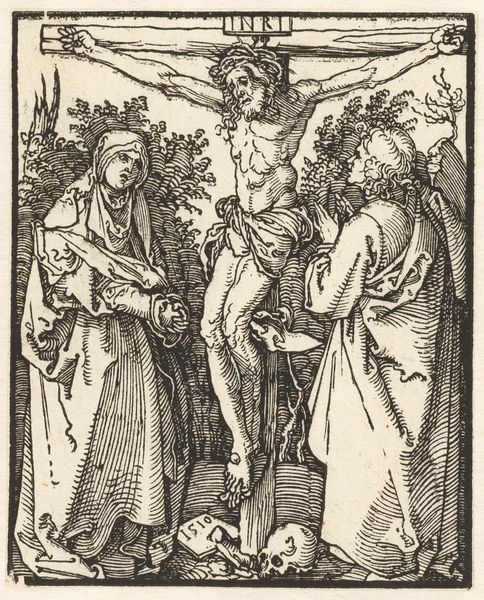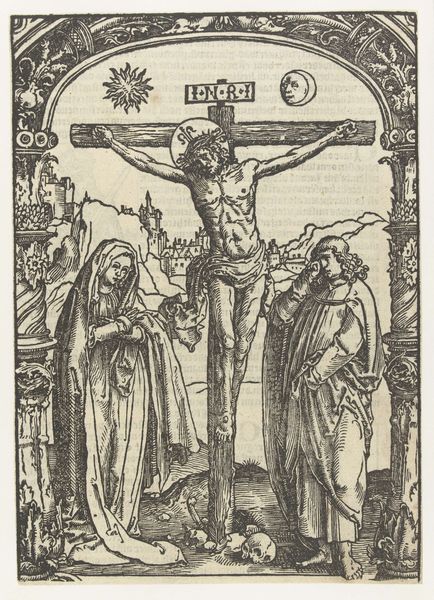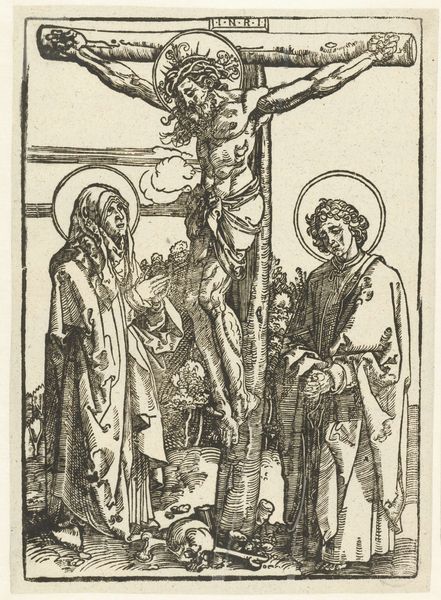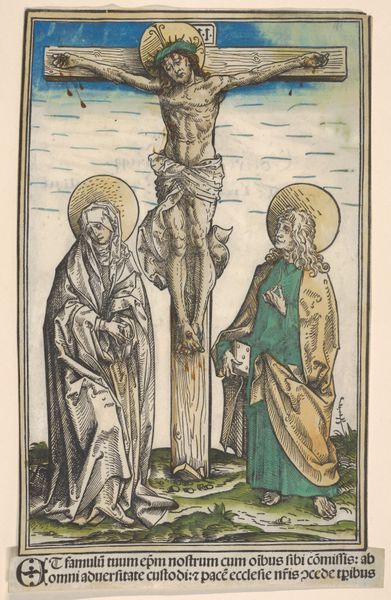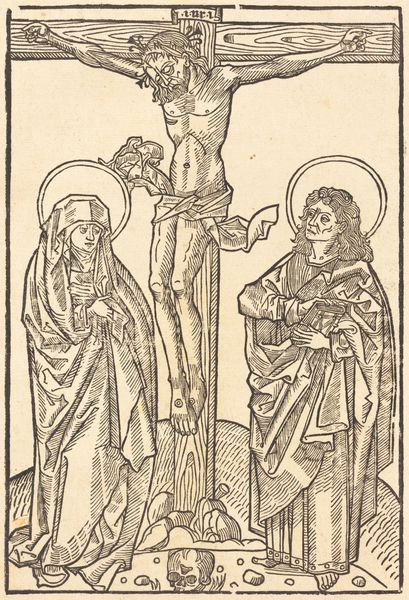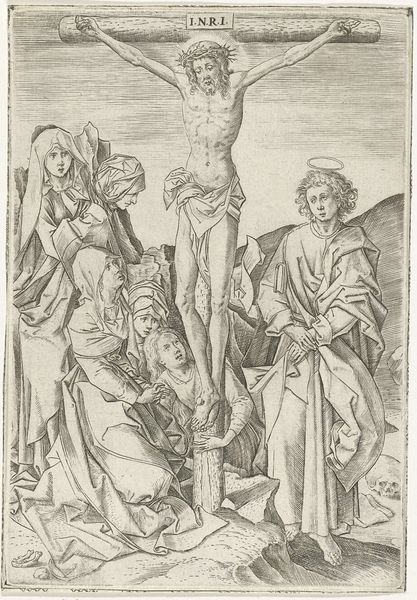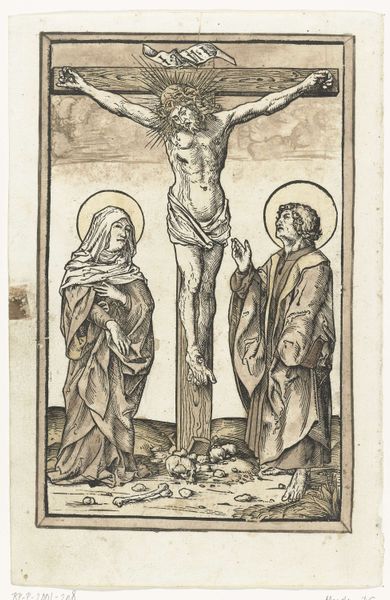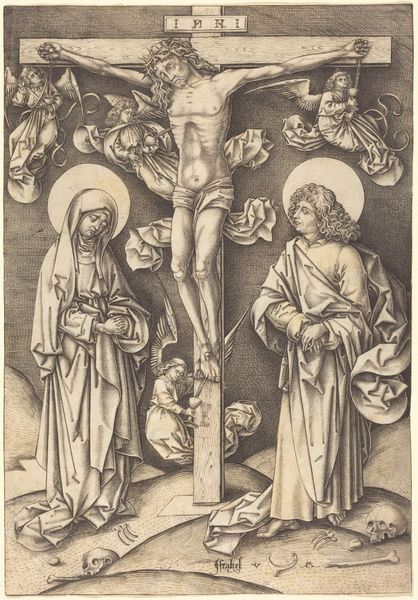
Christ on the Cross with the Virgin and Saint John 1485 - 1528
0:00
0:00
drawing, print, woodcut
#
portrait
#
drawing
# print
#
figuration
#
woodcut
#
crucifixion
#
history-painting
#
northern-renaissance
#
virgin-mary
Dimensions: sheet: 8 5/8 x 5 7/16 in. (21.9 x 13.8 cm)
Copyright: Public Domain
Curator: Let's discuss this arresting woodcut by Albrecht Durer, titled *Christ on the Cross with the Virgin and Saint John*. It’s believed to have been created sometime between 1485 and 1528. The piece exemplifies the Northern Renaissance style and can be found at the Metropolitan Museum of Art. Editor: It has a raw emotional power. The stark contrast created by the woodcut medium contributes to the somber, almost brutal depiction of the crucifixion. The figures are rendered with a degree of realism that amplifies their suffering. Curator: Indeed. Observe how Durer uses line weight and density to define form and texture. The intricate detail in Christ's hair and beard, the Virgin's flowing robes, and even the subtle shading on the landscape contribute to the image’s complex structure. The composition invites a prolonged and focused meditation. Editor: I'm struck by the physical labor inherent in the woodcut process itself. The act of carving away at the wood, of physically engaging with the material, feels deeply connected to the suffering depicted. The marks left by the tool, the visible process, underscore the pain. I notice, too, the skull and bones at the base of the cross, how do they resonate here? Curator: The memento mori—a visual reminder of mortality—is a classical element here. However, within this work it emphasizes the starkness of death versus sacrifice for redemption in the Christian faith. Durer masterfully integrates classical elements and Northern artistic traditions into a singular vision. Editor: I'm intrigued by how Durer's process translates the high drama of the crucifixion into something tangible and reproducible. Consider the distribution of this print – this brings the emotional impact of the event to a wider audience, challenging notions of what ‘high’ art could be by prioritizing both the material and its subsequent impact on culture. Curator: That is certainly part of Durer's success. The genius lies in creating a powerful, lasting icon through material and construction and then the art's design. This analysis emphasizes structure over context. Editor: Yes, I find the construction to be paramount when we look at process; each groove carefully etched adds depth to a tragic but redemptive picture. Curator: Durer’s meticulous craftsmanship makes that reading inescapable. Editor: Well, thinking of this print through a process driven and labor focused context really changed my appreciation for the piece. Curator: Absolutely, engaging closely with the art’s intrinsic structure provides endless new layers of meaning and perspective.
Comments
No comments
Be the first to comment and join the conversation on the ultimate creative platform.
